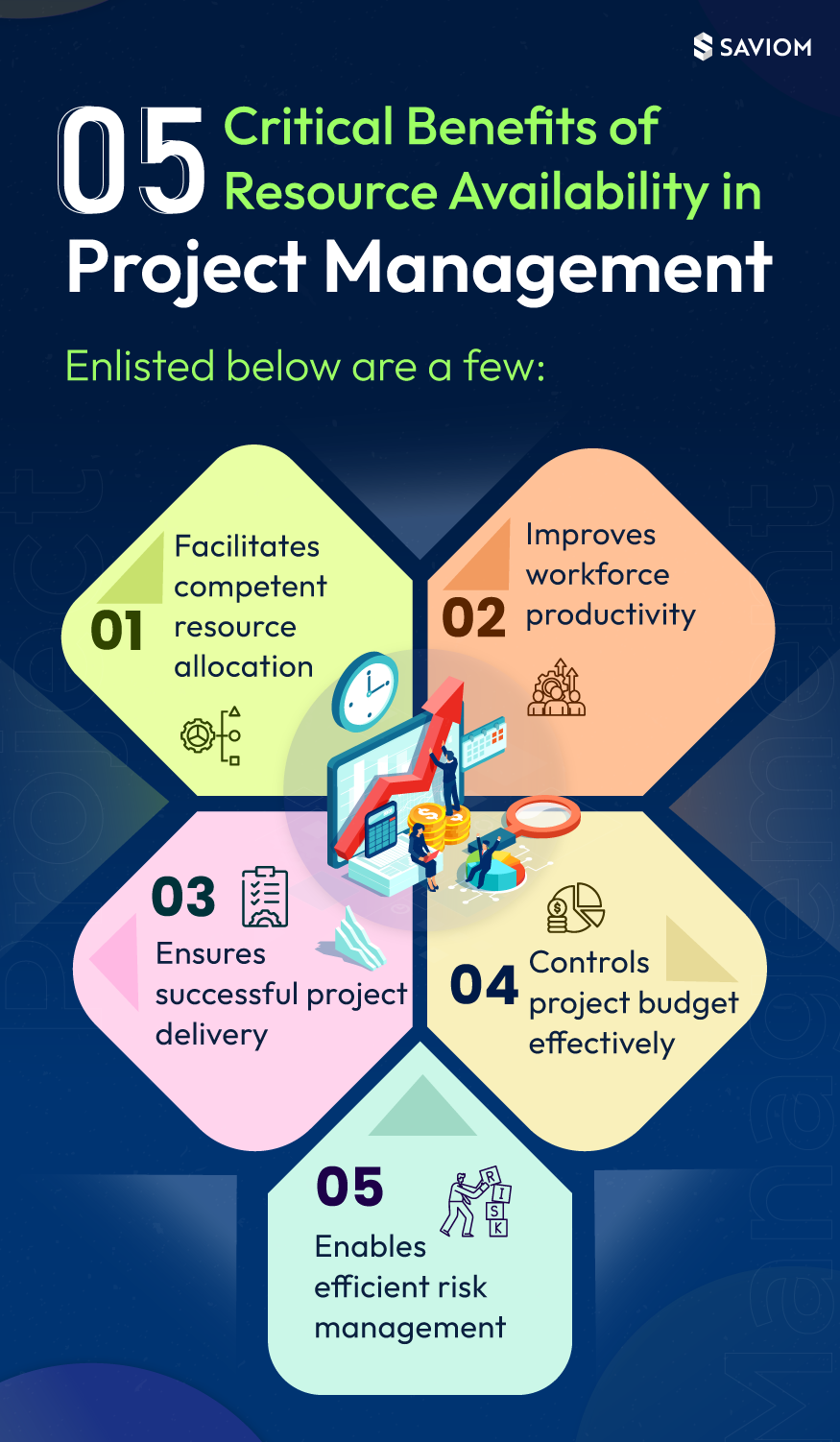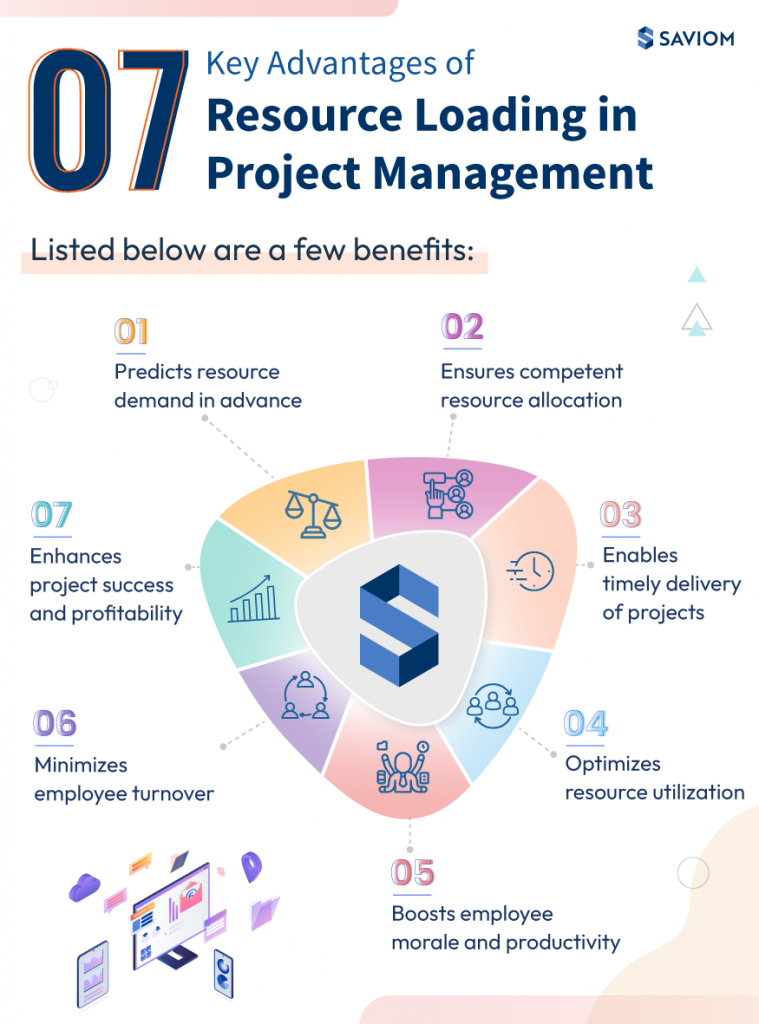Is it possible to talk about project management without talking about risk? Modern businesses and professionals understand that when it comes to managing projects and staying ahead of the competition, it’s necessary to manage a myriad of resource risks. These include a lack of key skill set, talent shortage, lowered productivity, and more.
As per the Gartner risk management summit- One of the major resource risks is the increasing skills gap in the organization, as 80% of organizations face a hard time finding and hiring skilled professionals.
While certain traditional risk management techniques may have served the industry in the past, these strategies typically fail to evaluate and prioritize risks. In addition, it becomes more challenging when managers need to handle these resource risks simultaneously for several projects.
One effective and reliable way to mitigate resource-related risks is by adopting comprehensive resource management software. It facilitates managers with data-driven insights to forecast risks and monitor them in real-time to stay ahead of the curve.
To begin with, let’s first understand the various resource-related risks and how resource management solutions will help mitigate them efficiently.
What is resource risk?
Resource risk refers to a set of unexpected events that have a negative effect on projects and businesses if they occur. For example, prolonged employee absenteeism can hamper the project timeline and contribute significantly to project delays.
According to PMI, Resource risks represent less than one-third of the records in the PERIL database, but their impact is significantly higher.
Some of the resource-related risks include:
Lack of resources
Organizations usually have projects in the pipeline. However, due to the persistent use of legacy systems, managers don’t have complete visibility into these projects and their workforce requirements. Thus, it makes it difficult for them to ensure the resource availability for timely project initiations. Ultimately, this leads to last-minute firefighting for competent resources or costly hiring.
Sub-optimal workforce utilization
When managers do not have visibility into resource bookings, capacity, and availability, it can lead to under or overloading. In case resources are underutilized, it will lead to disengagement and low morale. Conversely, in case of over-utilization, the employees may feel stressed, burnt out, etc. Therefore, sub-optimal workforce utilization will eventually lead to poor productivity, unplanned attrition, and disruption in project workflow.
Employee burnout and unplanned attrition
When resources are consistently assigned tasks exceeding their skill set, knowledge, or capacity for an extended period, it can result in work-related stress and exhaustion. If the situation persists, it may lead to burnout. This impacts their ability to perform daily tasks optimally or meet deadlines. Additionally, employees might resort to taking frequent leaves to avoid work, leading to absenteeism and, ultimately, unplanned attrition.
Skill obsolescence
Due to rapid technological advancements and changing skill demands, resources’ current competencies can quickly become obsolete, resulting in skill gaps. This may render them unprepared to take on new or advanced projects, potentially leading to missed business opportunities. Moreover, skill obsolescence can hinder ongoing project workflows, causing client dissatisfaction and reputational damage.
Scheduling conflicts
Within a matrix organization structure, where resources work across different departments, teams, or locations, gaining real-time visibility into their calendars becomes challenging. This lack of insight into current bookings, vacations, planned leaves, etc., can lead to scheduling conflicts. If these issues aren’t addressed on time, it results in resource unavailability, under/overallocation, and project schedule/budget overruns.
Dependency on critical resources
Due to the scarcity and high-cost rates of niche-skilled resources, organizations possess only a limited number of them at a given time. However, when there is a sudden surge in demand for these critical resources, project priorities may compete with one another. This dependency on critical resources can result in them working beyond their capacity, hampering their productivity and work quality.
Lowered productivity
Employees struggle with lower productivity due to various factors, such as excessive workload, unrealistic deadlines, skill mismatches, low morale, etc. Moreover, work stagnation can contribute to lower morale and sub-par performance. When managers fail to address these issues, employees experience disengagement and burnout. In the long run, it may lead to attrition, reducing the company’s internal talent pool.
Outsourcing risk
Outsourcing poses more than a quarter of resource risks. The search for the right resources for a project contributes to project delay. Another risk, especially with offshore contractors, is replacing staff with new resources at the eleventh hour. This requires extra efforts in terms of training, knowledge transfer, and relationship building, which impacts both the timeline and cost of the project.
Increase in bench size
When the major activities or tasks of the execution phase are completed, non-critical resources are frequently rolled off. This sudden ramp-down of resources leads to an increase in bench size. Moreover, there are other reasons that can lead to this, including last-minute project cancellations or a project being struck due to budgetary constraints. If this happens, the firm risks losing its talent and financials significantly.
Absence of succession planning
When someone in a leadership position or key resources leaves the company, there is a noticeable gap to fill. The absence of succession planning can widen the demand gap, and the unavailability of a critical/experienced resource can even halt the project. It will create a volatile work environment, leaving other employees demotivated to do their jobs. It also results in increased workload, jeopardizing the quality of deliverables.
As per Gartner, it is critical to have a quality bench of leaders and a solid succession management process.
These are some of the common resource- risks in project management. Let’s know the significance of risk management that drives projects to success
Importance of mitigating resource risk in project management
As projects rely on various types of resources, like human, financial, and physical, to achieve their objectives and goals, it is critical for organizations to manage resource risks effectively. Failing to do so will jeopardize project timelines, budgets, and overall outcomes. Efficiently managing the workforce enables managers to prevent resource overallocation and underutilization, which results in increased productivity and reduces cost overruns.
Furthermore, resource-related risks like the non-availability of critical resources or procuring key personnel will negatively impact the project timelines. Hence, managing these risks effectively will ensure that suitable resources are available for the projects and that project milestones are completed in a timely manner.
Inefficient resource management can lead to budget overruns, improper allocation, or unexpected expenses. By implementing effective risk management techniques, organizations can identify cost escalators, monitor resource expenditures, and make informed decisions to control project costs.
Risk management enables managers to recognize the knowledge and skill gaps and address them through training programs, hiring efforts, or reassigning resources to ensure the project has the necessary competencies. In addition, managers can develop contingency plans to mitigate the impact of unforeseen events, ensuring project continuity and reducing the likelihood of project failure.
Lastly, managers can establish credibility and trust among stakeholders by managing resource-related risks, leading to improved satisfaction and project success.
Resource risk management is an essential component of project management. Let’s understand some of the steps to determine resource risks.
Steps to assess project resource risk
Resource risks can negatively impact the project’s progress and profitability. Therefore, to ensure successful project delivery, project managers must create a risk management framework to mitigate resource risk effectively.
But where will you begin to assess your risk related to project resources? And how to draw out an intelligent contingency plan ahead of time?
Here are the necessary steps to formulate one:
Risk identification
Before project initiation, managers must assess the type, number, roles, timelines, and charge-out rates of resources needed. This insight allows firms to remain vigilant and anticipate potential resource risks such as shortages, scheduling conflicts, sudden ramp-down, unplanned absenteeism, sub-optimal utilization, critical dependencies on key individuals, etc.
Project managers must ask themselves the following questions when they begin the risk identification process:
- What are the potential risks that could happen during the project lifecycle?
- What could be the consequences of the risk on project delivery?
- Does the firm have the necessary resources(human & non-human) to effectively manage the risks?
By proactively identifying these risks, managers can preemptively develop robust course-corrective strategies. These measures minimize the impact of risks on the project budget/schedule and help maintain the momentum, ensuring timely project delivery.
Risk assessment
Once the risks have been identified, managers must conduct a thorough assessment to determine the likelihood of occurrence, priority level, and severity of each resource risk. The goal is to provide a structured approach to understanding and addressing these uncertainties, allowing organizations to develop mitigation strategies to minimize or prevent adverse outcomes.
The following techniques can help managers conduct risk assessment:
Risk register:
A risk register, also known as a risk log, is used in project management to systematically identify, assess, and manage potential risks within a specific project. It typically includes essential information such as the nature of each risk, the likelihood of its occurrence, potential business impact, preventive measures, etc. The risk register must be regularly updated and reviewed throughout the project to ensure that it remains accurate and reflects the current state of risks.
SWOT analysis:
The SWOT analysis helps managers probe into the project ‘Strengths’, ‘Weaknesses’, ‘Opportunities’, and ‘Threats’. By identifying strengths, firms can differentiate themselves from their competitors, while recognizing weaknesses helps firms identify areas for improvement. The opportunities guide goal-setting, and understanding threats helps identify potential project risks early on. Equipped with these insights, firms can effectively mitigate risks and improve project execution.
Brainstorming:
This collaborative technique brings together team members to generate creative ideas, solve critical problems, and innovate. It taps into the team’s diverse experiences and expertise to develop holistic solutions to address pressing issues in project management. Therefore, it proves effective for identifying potential resource risks and implementing measures to prevent them from materializing proactively.
Delphi technique:
The Delphi Technique involves a group of experts sharing their opinions on various risks anonymously. They start by giving their individual thoughts and suggestions. After that, there are feedback rounds where they refine their ideas, aiming to reach an agreement on how likely and impactful the risks are. This process continues until they achieve a collective viewpoint. The final report summarizes the agreed-upon findings and suggests strategies to handle the risks.
A risk mitigation strategy is a set of planned actions or responses that are created to eradicate or lessen the impact of project resource risks if they do occur.
Enlisted below are the steps to develop a well-defined mitigation plan:
Step 1: Following the identification and assessment of potential risks, the initial focus is to analyze risks based on the likelihood of occurrence, impact, importance, and time sensitivity.
Step 2: Managers must assign responsibility for each identified risk to specific individuals or teams, then communicate their roles and responsibilities for the seamless execution of the action plan.
Step 3: Next, the people in charge must establish clear objectives for each resource risk and define success criteria as well as mitigation strategies to guide subsequent actions.
Step 4: The designated individuals or teams, referred to as risk owners, should take the lead in developing targeted strategies to address each identified risk, ensuring a tailored approach.
Step 5: With strategies framed, managers must step in to allocate the necessary resources, including personnel, budget, and technology, to ensure the effective implementation of the mitigation strategies.
Monitor & control risk
This process involves tracking, reviewing, and optimizing the risk plan regularly. It evaluates the effectiveness of the risk response and contingency plans throughout the project lifecycle, ensuring no risk is overlooked.
Following are the steps to monitor progress and guarantee timely action systematically.
Step 1: It is important to send regular status updates to keep the entire project team and stakeholders aligned with the project’s progress.
Step 2: Decision makers must regularly check with risk owners and confirm the smooth progression of risk mitigation efforts.
Step 3: The management must monitor the risk register for updates/changes and flag issues promptly.
Step 4: Simultaneously, managers must regularly monitor and analyze the budget reserves allocated to address potential resource risks. If the funds are running low, it is essential to plan ahead and take corrective action to ensure everything stays on track.

Knowing the steps in assessing the resource risks in projects, let’s understand some of the best methods to mitigate resource risks effectively.
How to mitigate resource risk in project management?
“According to the study by Gallup, inappropriate risk management practices would lead to major losses in business and market value.”
It is evident that not being able to mitigate risks ahead of the curve can affect the project’s health. It will also negatively impact the firm’s financial sustainability and market reputation. The following section discusses how to mitigate resource risks in today’s dynamic project management scenario.
Foresee and bridge demand gaps to avoid last-minute firefighting
Once a pipeline opportunity reaches a certain stage of probability, project managers must estimate the project resource requirements to ensure they have the requisite skills within the organization. Following that, resource managers must perform a capacity vs. demand analysis to identify skill shortages or excesses. Consequently, they can implement suitable resourcing treatments to mitigate the demand gap ahead of time.
For instance, in case of resource excesses, managers can bring forward project dates or sell the extra capacity at a discounted rate. However, in case of resource shortages, managers can provide training/upskilling opportunities to the existing workforce or hire permanent/contingent resources based on project requirements. These measures can help avoid last-minute firefighting and reduce capacity wastage.
Ensure competent resource allocation for enhanced productivity
Competent resource allocation is key to ensuring successful project delivery. For this, organizations must deploy best-visible-best-fit resources to relevant project tasks. Therefore, managers can assess various resource attributes such as availability, skill sets, knowledge, capacity, charge-out rates, etc., to identify suitable employees.
When the right resources work on the right tasks, it ensures higher productivity, reduces errors, and delivers better quality outcomes. Moreover, it eliminates the possibility of under/over-skilled resources being allocated to mismatched tasks. As a result, it helps managers keep projects on track and meet client expectations.
Maintain a healthy mix of contingent and permanent employees
In a competitive and volatile business landscape, having a blended workforce can be beneficial for managing demand fluctuations. Based on current and pipeline project requirements, managers can form a balanced mix of permanent and contingent employees.
During seasonal peaks, managers can leverage on-demand professionals to avoid overexerting existing employees, especially the niche-skilled ones. This allows them to ensure seamless project workflow without incurring additional overhead costs. Thus, utilizing contingent workers allows firms to preserve project quality, ensure timely delivery, and reduce resourcing costs.
Leverage cost-effective global resources across the matrix boundaries
With proactive resource planning, firms can identify and allocate cost-effective local and global resources to projects. By replacing high-cost resources with competent professionals from low-cost locations, managers can reduce project costs significantly without compromising the quality.
Moreover, this approach will enable firms to tap into the best global talent and diversify their workforce. Beyond that, having cost-effective resources across the matrix boundaries allows organizations to offer around-the-clock client services. This enhances overall operational efficiency and improves customer satisfaction.
Apply resource optimization techniques to prevent employee burnout
It is imperative to track employees’ utilization levels in real-time to identify and mitigate instances of under or overutilization. Managers can implement appropriate resource optimization techniques, such as leveling and smoothing, to optimize the workforce’s schedule and ensure uniform workload distribution.
For time-boxed projects, managers can ease the pressure on overloaded resources by redistributing the workload among team members or assigning additional employees to maintain the project schedule. Meanwhile, for flexible projects, they can shift the start and end dates of tasks based on resource availability. These techniques enable managers to prevent burnout and enhance the resource health index.
Implement appropriate training and multi-skilling initiatives to mitigate skill gaps
Organizations must have an adaptable workforce equipped with diverse skill sets to meet emerging client and market demands. Hence, they must prioritize and develop comprehensive training and multi-skilling modules to mitigate existing skill gaps and upgrade their workforce’s competencies.
Managers can offer IDPs, on-the-job training, and shadowing opportunities to expand employees’ portfolios and equip them with multiple competencies. As a result, it will help firms to take on multi-faceted projects and maximize profitability. Thus, building a diverse workforce empowers organizations to future-proof their business against market volatility and ensure financial stability.
Facilitate effective bench management to improve billable utilization
Efficient bench management allows firms to manage the sudden ramp-down of resources across different project phases. With advanced forecasting techniques, managers can anticipate when the resources will be released from the project. Consequently, they can look into current project vacancies and plan work for resources before they hit the bench.
By allocating these resources to upcoming projects, managers can ensure continuous billability and reduce bench time. Further, if resources don’t meet the minimal qualifying criterion, managers can provide appropriate training/upskilling opportunities to improve their billable utilization for future endeavors.
Develop a robust succession planning strategy for critical positions
Succession planning is the future-focused practice that ensures that the sudden resignation of critical resources in key positions does not negatively affect the firm or ongoing projects. For this, managers can look into the internal channels to identify high-potential resources who have a consistent track record.
They can prepare these candidates by providing them with the appropriate training so that they can take on strategic or senior roles. This will ensure that they have a smooth role transition and knowledge transfer. Moreover, when internal resources are given better opportunities, it reduces turnover rates, boosts morale, and enhances engagement.
As the steps to mitigate the resources are clear, let’s see how advanced resource management software can help reduce risks.
How does modern resource management software help in mitigating resource risk?
An enterprise-grade resource management system provides features that allow managers to allocate and plan resources effectively. The advanced capabilities of the tool enable organizations to efficiently manage their resources and minimize the risks related to the workforce.
The tool provides 360-degree visibility into the organization’s resources and their information, such as skills, qualifications, availability, cost, location, etc. This enables managers to allocate competent resources to suitable projects.
Moreover, it provides a competency matrix that helps firms to implement effective succession planning strategies.
Furthermore, the forecasting and capacity planning feature enables the managers to foresee pipeline project demand. The capacity vs. demand report helps identify the resource excess/ shortage and take appropriate measures to bridge the gap.
Moreover, the forecast vs. actual and utilization reports help managers implement corrective measures and eliminate under/over utilization. It also allows them to mobilize skilled resources from non-billable work to billable or high-priority projects.
In addition, real-time project vacancy and people-on-the-bench reports enable organizations to identify and assign the resources on the bench to billable or strategic projects.
The what-if-analysis enables managers to create and compare various project scenarios and determine the best-fit resource plan. This helps managers identify potential bottlenecks, resource shortages, or conflicts that may arise and mitigate these risks before they impact the project’s timeline, budget, or quality.
In a nutshell, this is how an ideal resource management solution can help organizations mitigate risks effectively.
Conclusion
Do you still use spreadsheets to document resource-related risks in projects manually? It is evident that resource risks are inherent in projects and can continuously evolve if not mitigated well in advance. Therefore, managers can meticulously identify, analyze, and control resource risks across a project’s lifecycle using a resource management tool. It also provides early warnings to track the risks before they hinder the project’s progress.
What type of resource risks did you encounter recently?
The Glossary
The SAVIOM Solution
SAVIOM is the market leader in offering the most powerful and configurable solutions for managing enterprise resources efficiently and effectively. Having more than 20 years of experience, this Australian-based MNC has a global presence in over 50 countries. It is also popular with more than 100 customers and is helping them achieve their business goals. SAVIOM also has products for project portfolio management, professional service automation, and workforce planning software, which can be easily customized per business requirements.

















